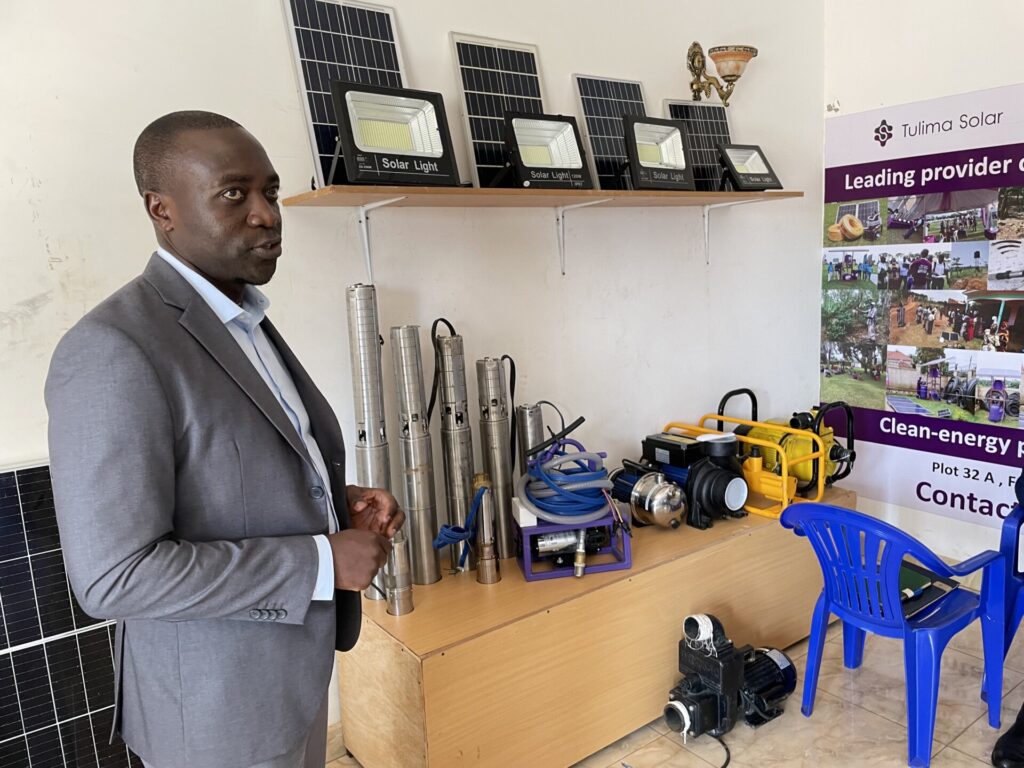By Carolina Barreto, Energy Access Director at Tetra Tech, and Ash Sharma, Vice President of Nefco and Head of the Beyond the Grid Fund for Africa


l
As the off-grid sector continues to grow and evolve beyond basic household lighting, and as utilities strive to stimulate additional demand, attention has turned toward boosting productive use of energy (PUE) among consumers. PUE has broad socio-economic benefits, including economic growth, income generation, job creation and often reduced workload, which allows time for additional productive activities and contributes to women’s economic empowerment.
l
The Productive use of electricity is the basis for long-term sustainable economic development intended by rural electrification programmes. The most efficient way to deliver effective and lasting impacts when designing a rural electrification scheme is to ensure that such programmes have a direct impact on livelihoods and revenue generation, in addition to impacts on standards of living. Increasing revenue generation can be accomplished by improving productivity or reducing production costs in an existing production process. It can also result from the uptake of new lines of productive activities based on electricity use that increase local value-added, generate employment and ultimately enhance local demand.
The sectors featured in the report are organized as follows:
Agriculture
Solar water pumping
Cold storage
Agricultural processing
E-mobility
Mini-grid/on-grid appliances
Health facility electrification
Nefco, the facility manager of the Beyond the Grid Fund for Africa (BGFA), commissioned a study to explore opportunities to expand BGFA’s existing PUE activities. BGFA provides results-based financing to de-risk the growth trajectory for distributed energy companies providing solar home systems and developing mini-grids, including those that incorporate PUE appliances and applications within their portfolios. BGFA has over EUR 126 million to support projects in Burkina Faso, DRC, Liberia, Mozambique, Uganda and Zambia and is funded by the Governments of Denmark, Germany, Norway and Sweden. As of March 2023, BGFA has signed contracts with fifteen projects, expected to provide over 1.1 million connections. BGFA is supporting a pure-play PUE company, Tulima Solar in Uganda, a company offering swappable battery systems, Mobile Power in Liberia and at least six other portfolio companies that have incorporated PUE into their products, including solar water pumps, fridges and freezers. Three of these companies are directing over 60 per cent of their results-based funding to PUE. There are several other companies in the BGFA pipeline in Uganda and Zambia as well.

I
The study was conducted by Tetra Tech, a global engineering and consulting firm with extensive experience in the off-grid sector, alongside implementers of donor-funded PUE programmes such as the Powering Agriculture and Water and Energy for Food grand challenges. Tetra Tech’s study consolidates findings from interviews with over 70 stakeholders as well as a literature review. The scope includes applications that generate income and create employment opportunities for socioeconomic development with a focus on the sectors described above and the 15 countries in sub-Saharan Africa with whom Sweden, the largest BGFA donor, has bilateral partnerships.
Challenges and opportunities in the PUE sector
I
The study found that whilst numerous recent PUE initiatives have resulted in some success, none have yet reached scale. The challenges of deploying PUE include relative affordability, risks in providing financing to early-stage entrepreneurs, small sales markets, supply chain complications and limited consumer awareness, among others.
However, some technologies are starting to scale. Solar water pumping is the most advanced sector, and some governments are offering end-user subsidies for solar irrigation products. Refrigeration and cold storage, agricultural processing and e-mobility are also starting to show promise. In addition, companies are beginning to provide financing for appliances in on-grid and mini-grid settings, and governments are starting to work with donors and the private sector to provide solutions for the electrification of health facilities. The report profiles ten companies working with productive use of energy.
Financing the PUE sector: the role of results-based financing
I
Multiple donor-led initiatives have emerged in the past few years and have been instrumental in helping the PUE sector grow. Milestone-based grants serve nascent markets and help companies research and develop products, test customer acquisition strategies and refine business models; examples include the Africa Enterprise Challenge Fund and Energy and Environment Partnership. The availability of grant funding alleviates the need for companies to spend their own limited funds in the early stages of development, which are often inadequate for their business needs and ultimately increase the price of final products, exacerbating the affordability problem.
Results-based financing (RBF) facilities are also supporting the PUE sector. The study found that early-stage and start-up PUE companies are often unable to take advantage of RBFs due to a lack of available equity and debt. RBFs only disburse payments after sales are verified. The study revealed that more mature companies that can secure their own funding are more likely to take advantage of RBFs, though some may struggle to achieve the sales volumes required by donor programmes. Working with companies that operate in multiple countries, including manufacturers that operate in several geographic areas and with multiple distributors, can help increase ticket sizes, which in the case of BGFA are in the range of EUR 1 million to EUR 5 million. Working with well-established SHS and mini-grid companies can increase the chances of success, though RBFs should ideally be open to businesses that focus purely on PUE. The study concluded that to avoid market distortion and the exclusion of existing market players, especially local ones, RBF programmes could be open for extended periods and accept applicants on a rolling basis to mimic a subsidy that is available sector wide and benefits all companies. Even in such a scenario, donor flexibility can still result in requirements that are difficult to meet and effectively exclude smaller players.
Guarantees can also support more mature companies seeking equity and debt for mid to large ticket sizes through bilateral transactions or via investors that wish to establish a portfolio of PUE companies or PUE end-users. Guarantees could be included in different transactions, either directly with manufacturers and distributors or as supplier credits to distributors through receivables financing and microfinancing institutions that lend to consumers. Existing guarantees could also be modified to incorporate PUE, if appropriate, to reduce the high transaction costs of establishing new guarantees.

I
Attracting and engaging the private sector
I
Companies interviewed for the study noted difficulties with the abovementioned initiatives, including long procurement times, lack of flexibility to adjust programme requirements midstream to account for realities on the ground, the high administrative burden of monitoring and evaluation requirements and the potential for market distortion. While these problems are sometimes difficult to avoid, governments and donors should strive to make additional efforts to involve companies extensively during the design phase to address potential issues.
Tailored technical assistance (TA) and policy and regulation can help create a conducive, enabling environment for the private sector. TA should ideally support a range of stakeholders, including end-users and financial institutions in addition to companies and governments. Policy and regulation can play a critical role in raising awareness, while exemptions from taxes and duties can reduce prices to help address affordability. Strong support signalling from governments will also give confidence to the private sector, encouraging investment in businesses that focus on deploying PUE. In BGFA, this institutional support is to be provided through national off-grid task forces, inspired by the successful Zambian pilot programme, that are currently being established in all six BGFA countries.
Conclusions and recommendations
I
As attention on PUE grows, stakeholders continue to identify and address gaps. Given the inherent unpredictability of nascent markets and the numerous challenges faced by the private sector in deploying PUE, governments and donors should co-design initiatives with the private sector and maximise flexibility in programming to the extent practicable. With the range of necessary components gradually falling into place, the PUE sector is poised to scale in line with the ambitions of governments and donors to support energy access beyond basic needs and toward enhanced economic growth through new employment opportunities and increased income generation.
Read the report
I
Read the full market assessment report: Scaling Productive Use of Energy Solutions in Sub-Saharan Africa
For further information, please contact:
Ash Sharma, Vice President of Special Funds at Nefco
ash.sharma@nefco.int, +358 10 618 06 53
Carolina Barreto,Energy Access Director, Tetratech
carolina.barreto@tetratech.com

